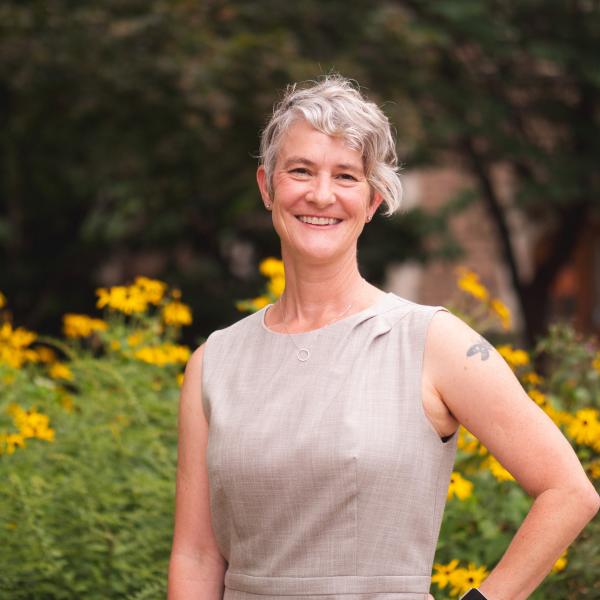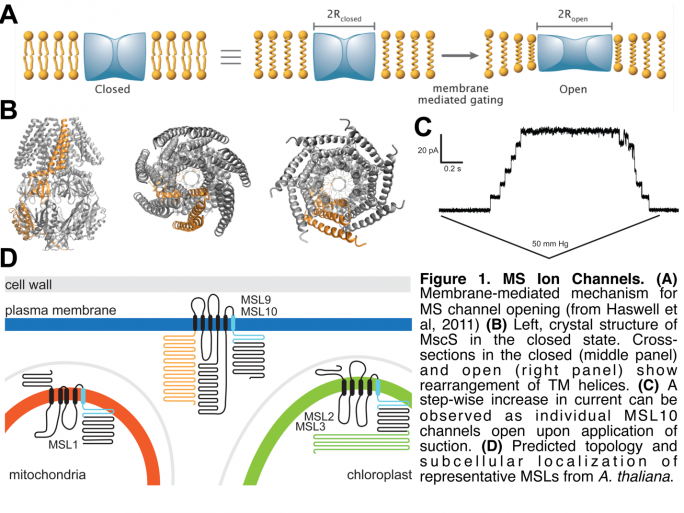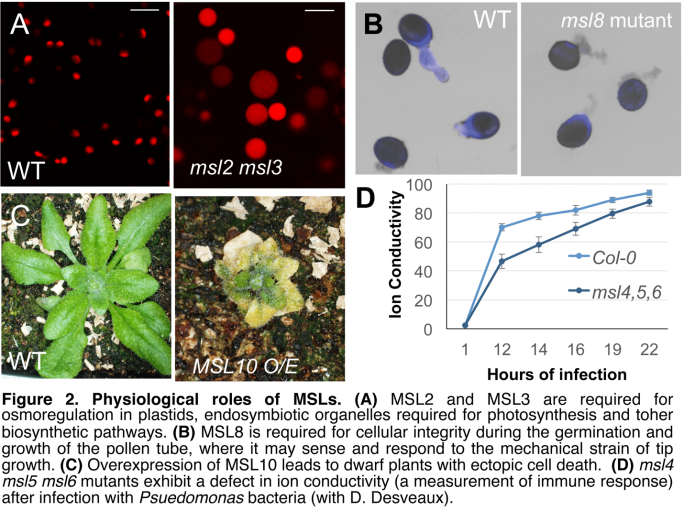Selected Publications
Complete publications list
C. P. Lee, G. Maksaev, G. Jensen, M. Murcha, M. E. Wilson, M. Fricker, R. Hell, E. S. Haswell, A. H. Millar and L. Sweetlove. (2016). MSL1 is a mitochondrial mechanosensitive ion channel that dissipates membrane potential and maintains redox homeostasis in mitochondria during abiotic stress. Plant Journal, in press.
M. E. Wilson, Matt Mixdorf, R. H. Berg and E. S. Haswell. (2016). Plastid Osmotic Shock Influences Dedifferentiation at the Plant Shoot Apex. Development, in press.
D. R. Luesse, M. E. Wilson and E. S. Haswell. (2015). RNA-Sequencing Analysis of the msl2msl3, crl, and ggps1 Mutants Indicates that Diverse Sources of Plastid Dysfunction do not Alter Leaf Morphology Through a Common Signaling Pathway. Frontiers in Plant Science 6:1148.
E. S. Hamilton, G. S. Jensen, G. Maksaev, A. Katims1, A.M. Sherp2 and E. S. Haswell. (2015). Mechanosensitive Ion Channel MSL8 Regulates Osmotic Forces During Pollen Hydration and Germination. Science 350:438-441.
S. M. Brady, M. Burow, W. Busch, O. Carlborg, K. J. Denby, J. Glazebrook, E. S. Hamilton, S. Harmer, E. S. Haswell, J. N. Maloof, D. Kliebenstein. (2015). Reassess the t-test: Interact With All Your Data Via ANOVA. Plant Cell 27:2088-94.
E. S. Haswell and P. E. Verslues. (2015). The Ongoing Search for the Molecular Basis of Plant Mechanosensing. Journal of General Physiology 145:398-394. Featured on the cover of the May 2015 issue.
E. S. Hamilton, A. Schlegel, and E. S. Haswell. (2015). United in Diversity: Plant Mechanosensitive Channels. Annual Review of Plant Biology 66:113-137.
K. M. Veley, G. Maksaev, S. M. Kloepper, E. M. Frick, E. January and E. S. Haswell. (2014). MSL10 has a Regulated Cell Death Signaling Activity that is Separable from its Mechanosensitive Ion Channel Activity. Plant Cell 26:3115-31.
S. Bell, J. Blumstein, K. Brose, A. Carroll, J. Chang, J. Charles, E. S. Haswell, M. Michelitsch, J. Owens, C. K. Patil, R. Smith, J. Tupy, E. Walsh, T. Ware. (2014). Defining Success in Graduate School. Molecular Biology of the Cell 25:1942-1944.
M. E. Wilson, M. R. Basu, G. B. Bhaskara, P. E. Verslues, and E. S. Haswell. (2014). Plastid Osmotic Stress Activates Cellular Osmotic Stress Responses. Plant Physiology 165:119-128.
M.E. Wilson, G. Maksaev, and E. S. Haswell. (2013). MscS-like Mechanosensitive Ion Channels in Plants and Microbes. Biochemistry 52 (34): 5708–5722.





